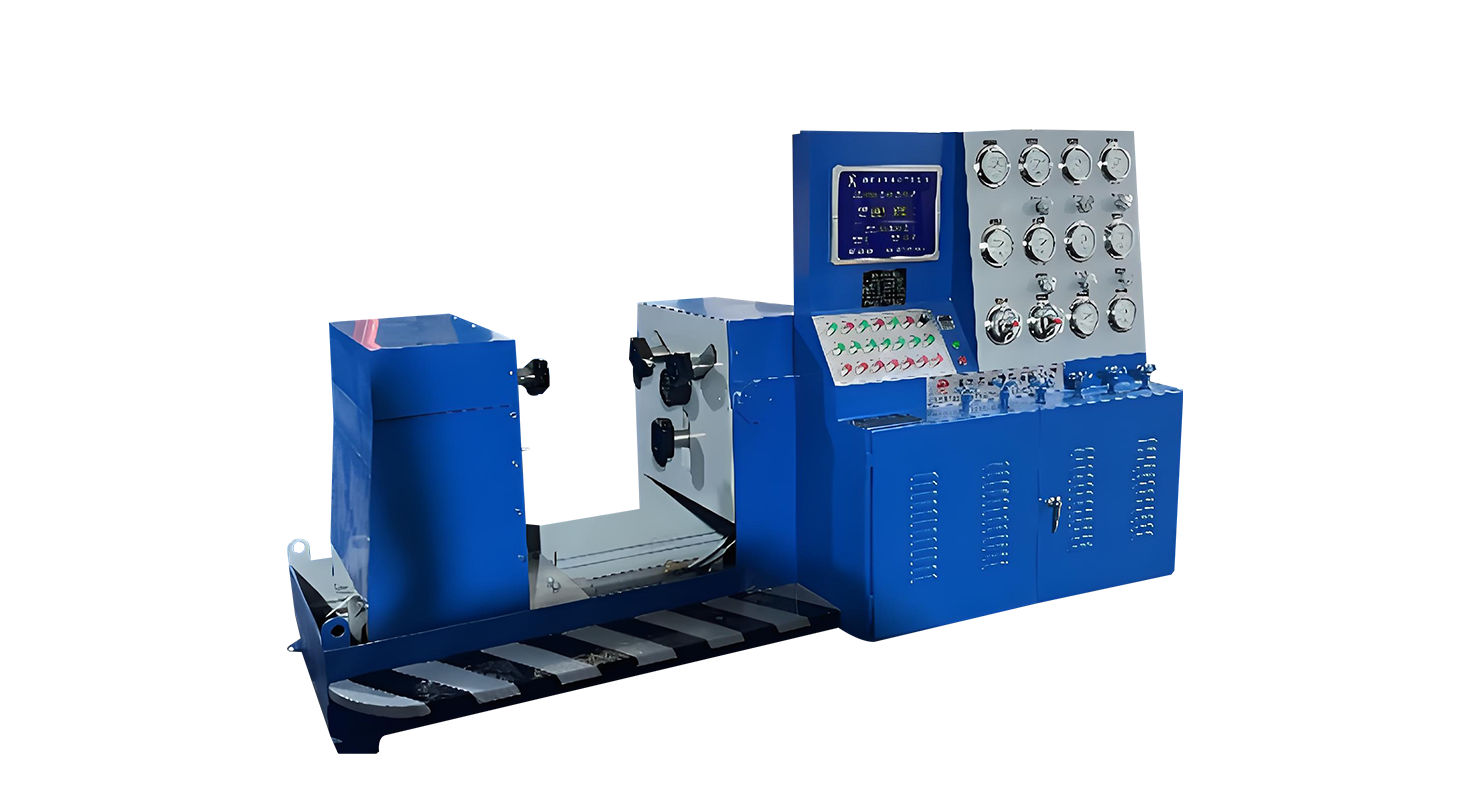Jun 25, 2025
In the industrial valve testing process, efficiency and accuracy are crucial factors that determine overall productivity and quality assurance. One effective solution to enhance testing operations is the use of multi-station valve test benches. These systems allow simultaneous testing of multiple valves, significantly reducing the time and labor required compared to single-station setups. In this article, we explore how multi-station valve test benches contribute to improving efficiency, with a focus on key equipment such as the hydrostatic valve test bench and pressure relief valve test stand.

A multi-station valve test bench is designed to accommodate several valves at once, enabling parallel testing under controlled conditions. This configuration is particularly useful in manufacturing environments where large volumes of valves need to be tested within strict timelines. By organizing multiple test stations into a single system, operators can conduct hydrostatic tests, pressure relief tests, and other functional assessments concurrently, increasing throughput without compromising the precision of each test.
One of the more common types of valve testing carried out on these benches is hydrostatic testing. The hydrostatic valve test bench applies water or another incompressible fluid to the valve under specified pressure conditions to verify its structural integrity and leak-tightness. This test helps to identify manufacturing defects such as cracks, weak seals, or other structural failures that might not be apparent under normal operating pressures. Conducting hydrostatic tests simultaneously on multiple valves can shorten overall test cycles, allowing manufacturers to maintain steady production flow.
Pressure relief valves require specialized testing to ensure they open at the designated pressure to protect systems from overpressure situations. A pressure relief valve test stand is specifically designed for this purpose. It typically measures the opening and reseating pressures, as well as the valve’s flow capacity and response time. Incorporating pressure relief valve test stands into a multi-station testing system enables parallel verification of these critical safety components. This not only saves time but also enhances consistency by applying uniform test conditions across multiple valves.
Multi-station valve test benches also improve efficiency by reducing the amount of manual intervention required. Automated controls and programmable test sequences can be integrated into these systems, allowing operators to set parameters for each station and monitor tests remotely. This reduces the risk of human error and frees up technical staff to focus on analysis and quality control rather than repetitive manual operations. Data acquisition systems attached to multi-station benches provide comprehensive records for each valve tested, facilitating traceability and compliance with industry standards.
Another advantage of multi-station valve test benches is their ability to accommodate a variety of valve types and sizes within the same system. For instance, a single test bench can be equipped with fixtures and adapters to test ball valves, butterfly valves, gate valves, and globe valves without extensive reconfiguration. This flexibility is important for manufacturers who produce a diverse product range and need to switch quickly between test setups. Incorporating specialized stations such as the hydrostatic valve test bench or the pressure relief valve test stand into a modular system further adds to this adaptability.
When implementing a multi-station valve test bench, it is essential to consider several factors to ensure efficient operation. The system layout should optimize space utilization while providing easy access for loading and unloading valves. Pressure supply and drainage systems must be designed to handle simultaneous testing without pressure drops or cross-contamination between stations. Additionally, safety mechanisms such as pressure relief valves and emergency shut-offs should be integrated to protect operators and equipment.
Maintenance is another important aspect of multi-station valve test benches. Regular calibration and inspection of pressure sensors, flow meters, and control valves are necessary to maintain test accuracy. Well-planned maintenance schedules help less downtime and prevent unexpected failures that could disrupt production. Training operators to manage multiple test stations effectively also contributes to sustained efficiency gains.
In summary, multi-station valve test benches represent a practical approach to enhancing valve testing efficiency. By enabling simultaneous testing of multiple valves, these systems reduce turnaround time and increase throughput in manufacturing and maintenance environments. The inclusion of specialized equipment such as hydrostatic valve test benches and pressure relief valve test stands within multi-station configurations further expands testing capabilities. When combined with automation and flexible design, multi-station valve test benches support reliable and efficient valve quality assurance processes.
Manufacturers seeking to optimize their valve testing operations can benefit from adopting multi-station systems that align with their specific testing requirements. With careful planning and implementation, these test benches can contribute to improved workflow, data accuracy, and overall operational effectiveness in valve production and quality control.